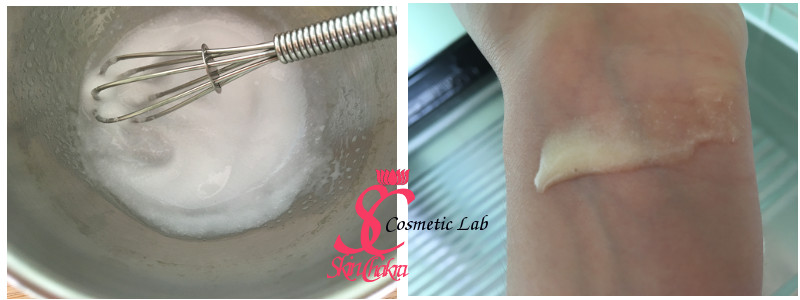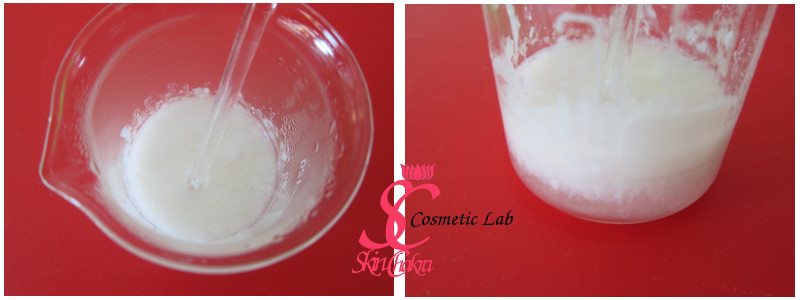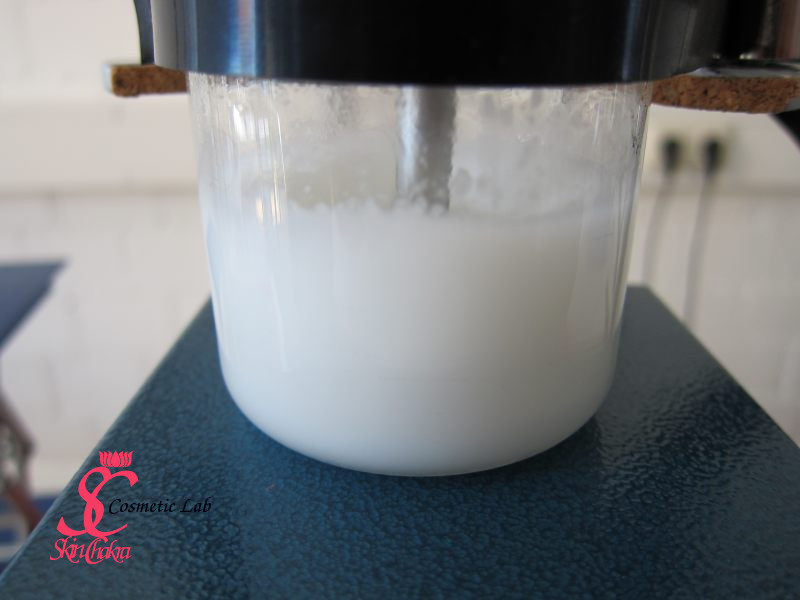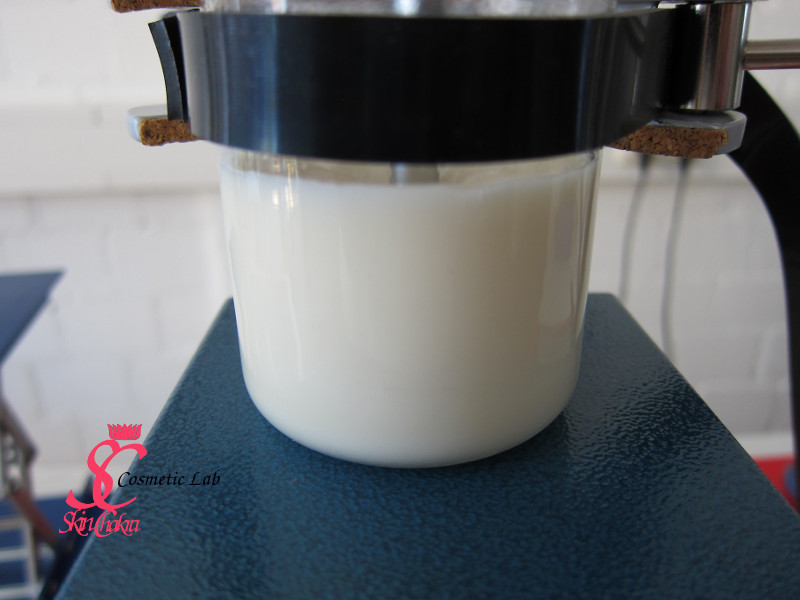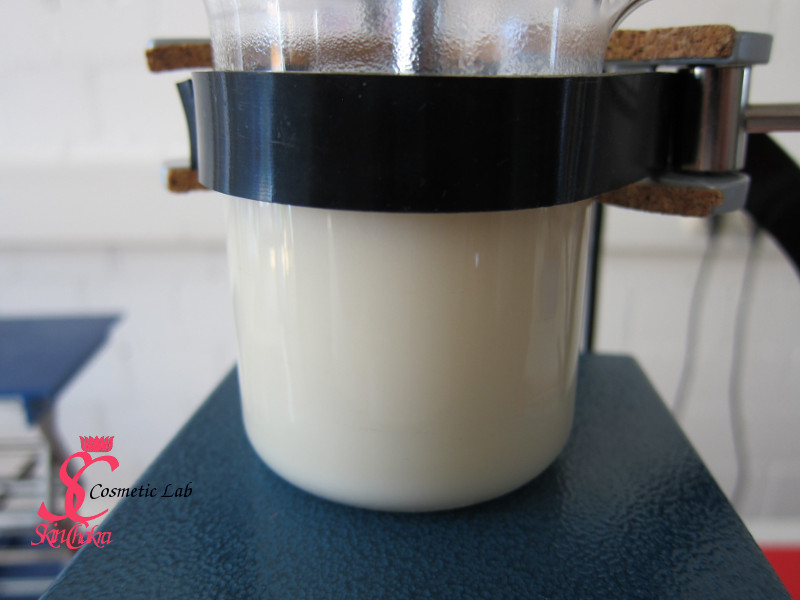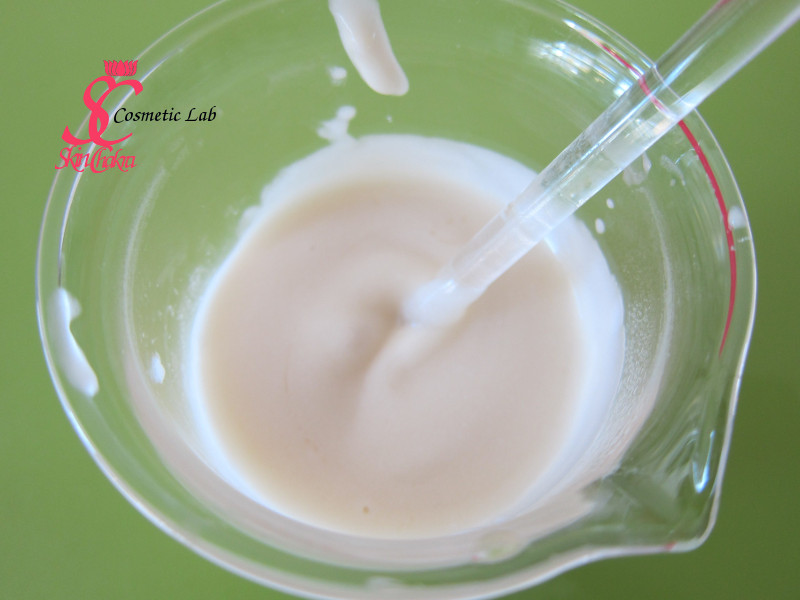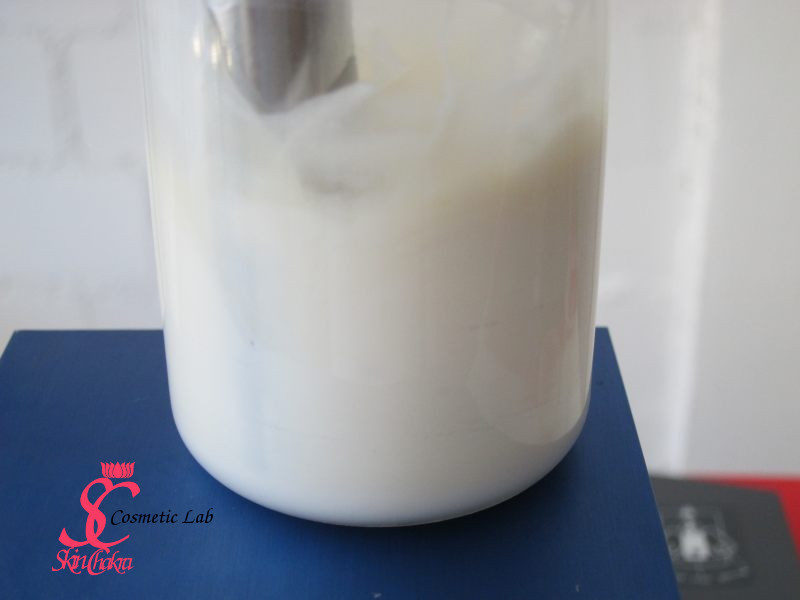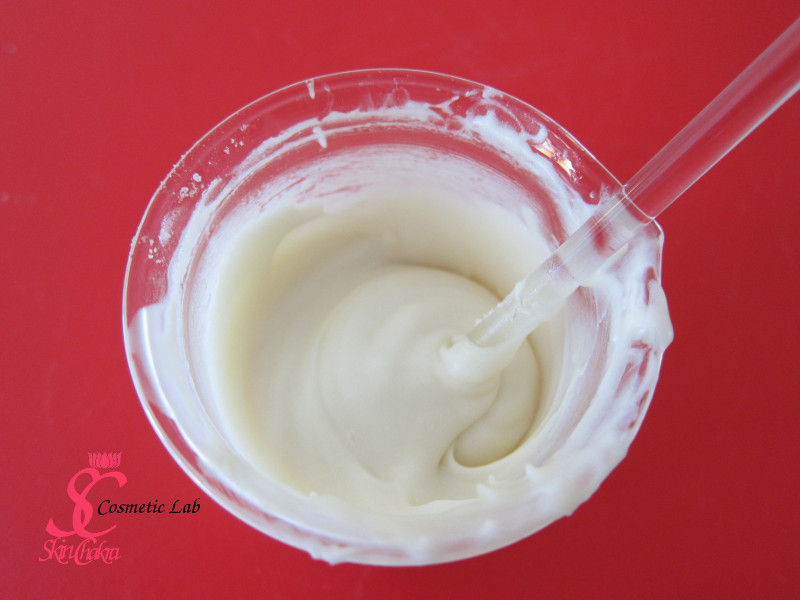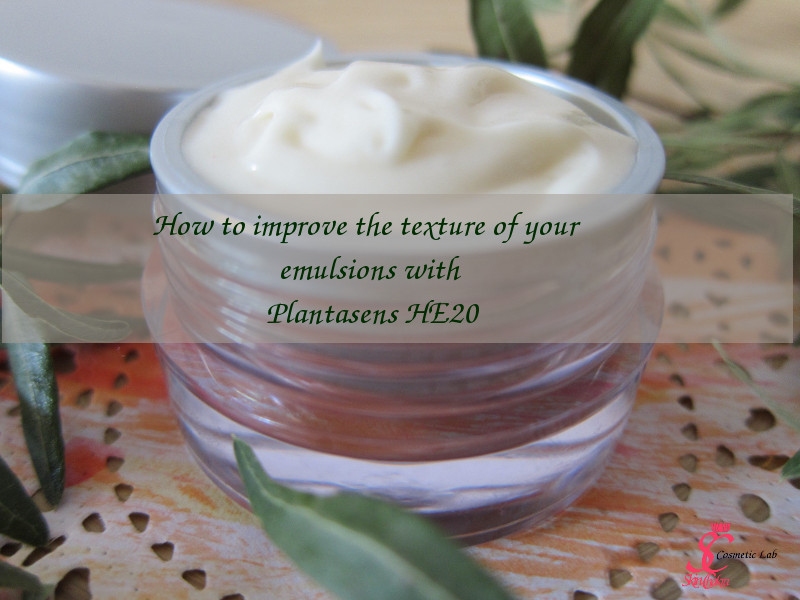
Sonntag, 14. August 2016
How to improve the texture of your emulsions
We've been playing around with Plantasens® HE20 since one year and find it a very forgiving and versatile natural O/W emulsifier.
We've tested this emulsifier at different concentrations and with varying oil phase concentrations, we've tested the emulsifier to study the performance of different gums and gum blends, we've applied it in surfactant containing formulations, we've added the emulsifier to the water phase, to the oil phase or made one-pot preparations, we've prepared hot-hot or hot-cold preparations and shared our procedures and recipes with you.
Plantasens® HE20 was not only tested in our own laboratory, our amazing Teresa from the Balm Kitchen has prepared several products with this emulsifier in her own lab in Singapore and has submitted a few tutorials to this blog as well.
To make a long story short, the emulsifier was tested by several artisan manufacturers (and not only professionals in professional labs equipped with high-end homogenizers and mixers) and was found to be quite easy to work with, creating emulsions and creams with a nice and smooth texture without having a great impact on products colour or scent.
Last week however, we have had two SOS calls from two individual artisan labs both of them having some issues with the texture of the emulsions they have created. They both have observed (and felt) some graininess in their emulsions.
These photos were submitted by Jilly from Belgium who is a very exact and perfectionist student of skincare science. She has promised to write a guest blog post for us, explaining "to-do" and "not-to-do" from her point of view (which is certainly more helpful for you than all of my blog posts because she simply oberves everything from the same point of view and angle like yours and does things the same as you do in your lab).
Anyway, since we don't like you to purchase an emulsifier from us just in order to get stuck and frustrated with it, I've decided to write another explanatory blog post with the method we've found to work the best and create the best texture.
I'm not discussing that there is absolutely no difference between an emulsion made with a spatula, a hand whisk, a stick blender, Blendia or a professional overhead blender and a homogenizer. This would be a big lie and a very unrealistic and misleading statement. But as I've repeatedly mentioned, as long as you're working in small batches and specially as long as you're a student of skincare science, there is not need to invest in state-of-the-art professional mixers.
Believe me if a formulation or a procedure are not correct (balance of the ingredients, heating-cooling procedure, order of adding certain ingredients), even the best homogenizers in the world can not keep the ingredients together for a long time. It is very possible that your hand stirred sample becomes separated in 2 days and a professionally stirred sample after two months but non of them would remain stable for a reasonable and acceptable period.
Anyway, to help you out of frustration and to push you a little bit (or shake the angst out of your limbs) let me sum up our findings about Plantasens® HE20
- Plantasens® HE20 could be added to the oil phase, to the water phase or even made in a one-pot procedure when you blend oil and water phase from the beginning all together and heat them up together
- Although it is a broad range emulsifier (working for a broad range of oil phase concentration), our experience has proved that it works the best for very low oil concentrations (or even no-oil formulations) or for medium to high oil concentrations.
With no oil concentration we mean cleansing products when you like a creamy texture and appearance but no oil at all, or low ol concentrations (less than 5%)
With medium to high oil concentrations, we mean an oil phase concentration between 20-35%.
- So far, we've created the best texture in a hot-cold-cold process (when your ingredients allow it). We add plantasens to a part of the water phase (30-40% water) and heat it up. The water bath temperature is about 75-80 oC.
If all of your oils are liquid at room temperature, you can add the oil phase at room temperature. This is excellent because you can apply heat sensitive oils and extracts without being worried about their degradation. If you're using butters and waxes, then you have to heat up the oil phase (or at least a part of it) to the same temperature as the water phase.
This is the most important part of working with Plantasens® HE20 and is the cause of your frustration:
Plantasens® HE20 does not dissolve in water. It melts in water bath (by heating) and swells in water to a gel-like texture.
If Plantasens® HE20 does not swell and is not blended completely at this stage, you'll certainly have that unwanted graininess and probably emulsion instability. No matter how you blend the water phase during heating, a glass rod, a spatula, a hand whisk or an overhead mixer, the heating and stirring at this stage dictates the texture of the emulsion.
Test the consistency and texture of your water phase before adding the oil phase for the first few times to make sure it is really smooth. Apply a few drops over your skin or over a microscope slide to feel/observe the texture (don't worry that you're loosing a few drops. It is not deadly important). If you feel any graininess or any uneven texture then continue heating and stirring till you reach to that thickened and gel-like texture.
Let's make an emulsion mask together to see what I mean with a gel-like texture. I tried to make the formulation as simple as possible. It contains nourishing plant oils and extracts but the rest of the formulation is quite simple (KISS principle).
Formulation:
Phase A
7.0% Plantasens® HE20
To balance freshly boiled distilled water (this is all the water you need in the formulation. You can substitute it with a hydrosol)
Phase B
19.0% organic macadamia oil
2.5% Lavender extract in organic baobab oil
2.0% Chamomile extract in organic jojoba oil
2.0% organic evening primrose oil
5.0% Squalane
1.0% Tocopherol
0.1% a-Bisabolol
0.1% Rosemary CO2 Extract
Phase C
5.0% Vegeluron
0.1% Dermofeel PA-3
1.0% Panthenol
2.5% Hydroglyceric Jiaogulan extract
2.0% Hydroglyceric artichoke leaf extract
2.0% Hydroglyceric lentil sprout extract
2.0% Sodium lactate
2.0% oat amino acids
0.1% Allantoin
Phase D
4.0% Glycerin 99,5%
0.5% Solagum AX
Phase E
0.5% Euxyl K903
3.0% Dermosoft 1388 eco
NaOH to adjust the pH
Procedure:
1- Heat phase A in a water bath @ 75-80 oC. Stir the beaker during heating.
The water phase should look like the above photo before plantasens HE20 is melted and dispersed in water
and like the above photo after Plantasens HE20 is fully dispersed.
2- After full dispersion of Plantasens HE20 stop heating and add the oil phase as you stir the Plantasens-water phase. Since all of our oil ohase constituents are liquid at RT, we've added the oil phase without any heating. This is a great advantage that you don't heat your sensitive oils and plant extracts.
At this stage, the blend already looks like a nice and thick emulsion.
3- Blend all the ingredients in phase C (at RT) and add this to the previous oil/water/emulsifier blend in small aliquots and as you stir the blend
4- If you're blending manually (spatula, hand whisk etc.) continue blending for a few minutes and then every now and then for the next 15 minutes.
If you use a Blendia or another homogenizer, homogenize the blend for a few minutes (1-4 depending on the batch size and the homogenizer) .
This is the texture of the pre-emulsion before homogenization. It is very nice and smooth but since the plant oils and extracts have some colour, the emulsion is beige .
And this is the appearance of the emulsion after homogenization. The only difference (with naked eye) is the lighter colour.
5- Blend the gum and glycerine in a small beaker and disperse this under stirring in the emulsion
6- Continue blending until the gum is fully dispersed.
7- Add the preservative blend. Measure the pH of the emulsion. It should be slightly acidic and you'll need to increase the pH to 5.0-5.5 by adding Sodium hydroxide or Sodium bicarbonate. If by any chance (when you're adding other plant extracts or hydrosols) the pH is higher than 5.5 then you have to reduce the pH by using lactic or citric acid.
Look at the nice and smooth texture of the emulsion. Isn't that adorable?
Fill the mask in a suitable jar. You may want to take a micro kit sample for microbial testing. The viscosity increases a little bit in the next 24 hours and if the first step (dispersion of plantasens HE20 in water) was complete , the texture remains nice and smooth for the whole shelf-life of the emulsion. If your first step was not complete, you'll observe the graininess in 12-24 hours.
It's your turn now to improve the texture of your emulsions. Make your first samples in small batches, 50 ml would be enough if you blend manually. Feel free to send us your photos and comment either per mail or to our Facebook page. If you post any photos on Instagram, don't forget to tag @SkinChakra.
